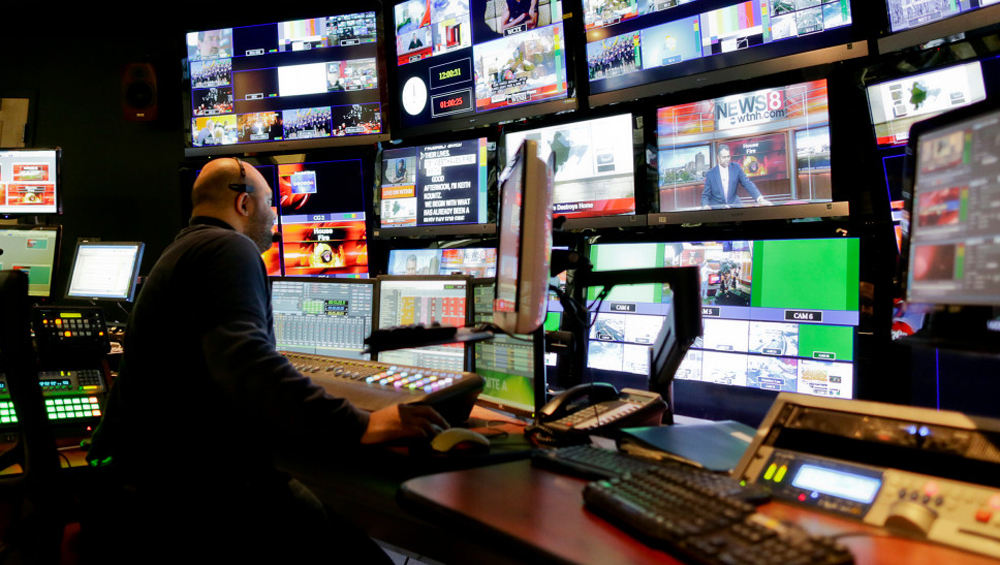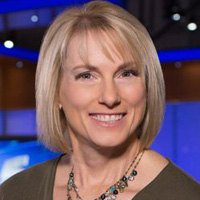
TVN Executive Session | Nexstar Hews To Decentralized News Approach

When it comes to its newsrooms, Nexstar Media Group doesn’t subscribe to a top-down approach.
“We turn to our local markets to do what is right for their communities,” says Susan Tully, Nexstar’s SVP of local content development, asserting stations are given autonomy on a number of fronts.
That ranges from how many staffers to call back to the office from their coronavirus-induced remote working postures to how granular coverage should be in the face of what dying local newspaper competition is now yielding, Tully says. It extends to what permanent changes to workflows each station may now face once the pandemic subsides.

Susan Tully
In an interview with TVNewsCheck Editor Michael Depp, Tully says corporate’s role is more to give guidance, and that includes advising journalists to keep a low, relatively unmarked profile when covering volatile environments like the recent protests. Nexstar’s 5,400 journalists are encouraged to take a fly-on-the-wall approach in their coverage, she says. And she notes stations won’t be called upon to provide new investigative or enterprise material for Nexstar’s forthcoming national newscast, News Nation.
An edited transcript.
News Nation will launch this fall as a new national newscast. The company said it is going to draw from the talents of its news-producing stations when it does. Will they be called upon to produce enterprise or investigative stories for News Nation?
That is not the plan at this time. News Nation will use their material where appropriate. None of our local stations are being asked to do anything differently than they are doing now.
Nexstar has some 5,400 journalists across the company. How is the pandemic impacting that size? Are softening ad sales resulting in furloughs or hiring freezes or layoffs?
That really isn’t [a question] for me. From my perspective, our newsrooms have not missed a beat. Ratings are incredibly strong because of people’s trust in local news. Journalists in your local markets are your neighbors, and they have a duty to that community to give them a lot of information that is trustworthy.
The pandemic has been brutal for many news organizations, particularly local newspapers that have been cut beyond the bone. Can you see an opportunity there to expand local coverage or to create more robust local digital news operations to fill some of the gaps that the papers are now leaving behind?
We have already been filling those gaps for a few years. I look at our metrics for digital during the pandemic and our numbers are incredible. Those digital offerings are of great value to viewers.
But newspapers get into very granular news — civic meetings and areas that TV news typically does not dive into deeply. Is there a space to expand coverage areas into things like school board meetings or stories that may not typically be represented?
That is a market -by-market call. We turn to our local markets to do what is right for their communities and if that includes that granular type of coverage, they do it. The Nexstar approach is we leave it to our local stations and digital properties to service their communities.
Most stations have spent the last three months predominantly in remote production. How and where has this period prompted you to reassess elements of your own local newscasts?
Nexstar has produced statewide town halls around the pandemic. In almost every state we have a newsroom that has produced a statewide town hall. We did these with members of congress, governors and local leaders all remotely from their offices or living rooms. In the past, that production value would have never been suitable to us. But the viewers say that is OK. That is a real eye opener for us to drop some of these barriers to getting really good content on the air or out digitally.
Do you see keeping some of your reporters permanently remote?
A lot of stations are learning what their new normal is. We have 110 news-producing markets. All of those markets are incredibly different. The physical buildings they are in and their opportunity is to stay remote is different. We really leave that up to the local stations. They are going to determine what worked and what they want to get back to as [far as] normalcy. We give our local stations a lot of leverage to do what they need to do to best serve their community.
Station groups and individual stations are bringing back people now from a high watermark of upwards of 75% of people remote working. Where are your stations on that? How many people are you bringing back into the newsrooms at this point?
It is variable by market just because some stations have such limited physical space that they are not going to risk their employees’ health. Others have a lot of space and so they can keep people spaced out. It just depends on what their physical plant is like, and that is really up to the general manager working in conjunction with corporate.
For a time, the pandemic ushered in record numbers for local news along with a whole new generation of viewers. What efforts are you making to hold onto those viewers in the longer term?
What we have always said about that younger demographic [is] once they hit a certain age, they tend to start watching television because they need information they can trust. Once you own a house and pay taxes and have children, you are a lot more in tune with what the local news is. The pandemic has made them very in tune with what is going on locally. Being that they understand what the value of local news gives them and the trustworthiness, it does shift them much earlier than that life cycle usually tends to toward news. They go to digital heavily, but they don’t necessarily trust all the sites or the apps they use. They are learning that this is a solid source.
The recent protests exposed reporters to whole new levels of risk as they went out into the streets to cover them. What directives and guidance are you giving your reporters right now to best ensure their safety from police, protesters and the virus when they are out in the field?
That weekend when everything started to intensify, we were on the phone and email a lot with our local stations and the No. 1 [priority] was stay safe no matter what. We put together a list of ways that they could cover what was happening as safely as possible. Journalists want to run toward the action, so we had a list and we had guidance around that. We leaned upon our stations for best practices, things as simple as when it gets dark do not turn your lights on because you become a magnet. Don’t wear any logo gear. We did not have any injuries that required treatment. Our crews stayed safe but covered the story very well.
Was the logo gear issue because they might be a target?
Yes. What we learned is anything with a logo, a news unit, a mic flag, a shirt, a hat, they would know you are part of the media and that would change the course of what was going on. It was just be a fly on the wall and report without calling attention to yourself.
We made sure they had ID on them, but on a lanyard underneath a shirt so to be able to pull out that lanyard and show police who you are. We make sure they had proper identification on them. As you watch the national news, you would notice that those crews in the national news did not have anything that identified who they were, but they all had their badges on from what I watched.
The protests have also opened up new considerations in how TV news has framed race in its reporting. How, if at all, is Nexstar reexamining race in its representation in local news?
Those are local discussions happening at the local newsrooms, and from a corporate perspective we are here to give them guidance. We constantly talk to our stations and see if they need us to help them with any of that dialogue.
Given remote working conditions, this is going to be an especially challenging year to cover the election. How has your election coverage game plan evolved around the remote production considerations that you have to deal with now?
The campaigns are having to do the same thing. We are interviewing candidates remotely. Nexstar has a good history of presenting large-scale debates. We are looking ahead to how we can still do that, if it means socially distanced with no audience. We are still going to be as aggressive as we have always been in covering politics, in presenting debates, we just have to adapt it to whatever the current situation.
This has been an unprecedented time of attacks against both local and national media, and the president continues his efforts to whip up more animus frequently. What is your response to that when you see him doing that as someone in charge of 5,400 reporters?
I don’t know how to answer that one. Our local newsrooms have done interviews with the president. They have been very respectful to each other. Our goal every day as local journalists is to present the facts without bias. Our newsrooms do not look to make themselves the story. We don’t take sides. We don’t show bias.
Be that as it may, they are still facing now more risk than ever. Do you have an elevated level of concern for the safety of your staff?
Everybody is on edge now. Everybody has a certain tenseness about them. It is our new normal. With our crews we preach safety, whether they are covering a severe weather event like a hurricane, a protest or people who don’t want them in their community. Sometimes people don’t like us because we are holding a camera and a microphone. They just have to do their best to stay calm and to handle the situation in a safe way.
Axios is now allowing its reporters to join protests and it is even saying that it would cover bail and help with any medical benefits or injuries they might sustain. Where do you fall on that?
It comes back to our belief is to stay unbiased when covering a story. On the activism question, if we have an employee who comes to us and wants to be engaged in that way, the discussions start around what that means, but we do not have a corporate top down here. That is not what we do as a company.
We are bracing for an uncertain duration of COVID-19 and we don’t know how bad or how long this is going to go on. There is a long likely recession in its wake that is going to batter many communities. How are you going to continue to meet the moment given all the stresses that this is placing on your own organization?
All of our stations are looking at how they can be a part of rebuilding a community and what is specific to their markets. You look at markets in places that rely very heavily on tourism such as Honolulu, Las Vegas and New Orleans. Their needs could be different than a Peoria or another market. They are looking at how they can be more engaged in helping people find jobs. How they can be more supportive of the business community throughout the pandemic. Each market knows what they need to be there for their communities, and we are there just to help and give them guidance.
































Comments (0)